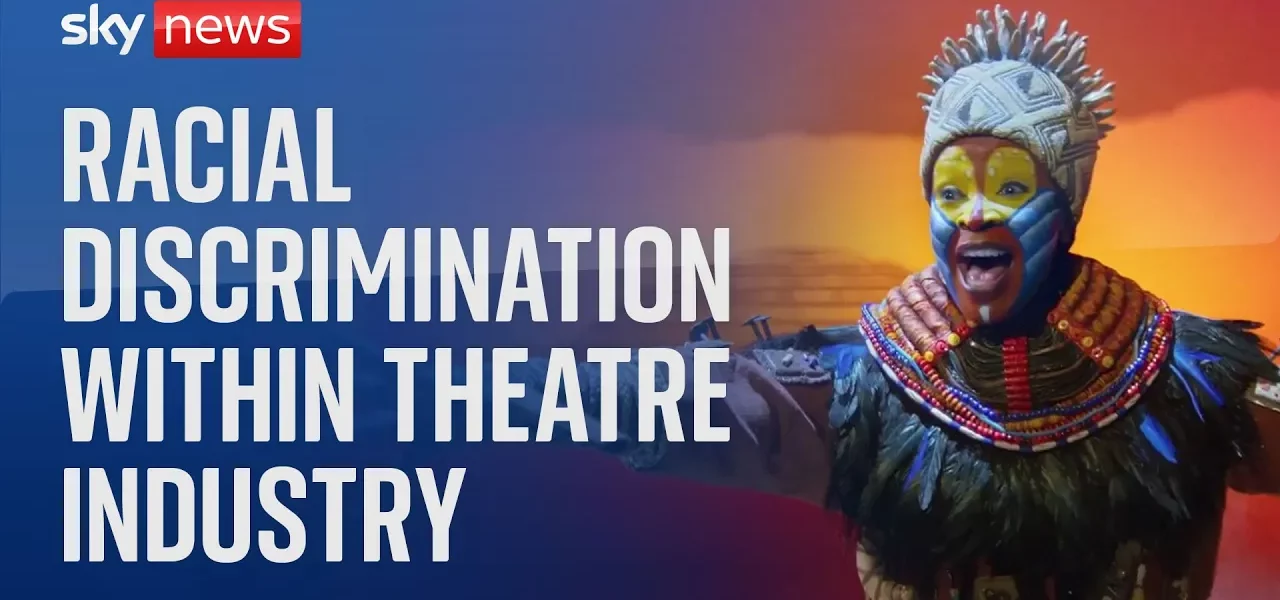Racial Bias in London’s Broadway Theater: A Comprehensive Analysis

This article delves into the experiences of black theater professionals in London, examining the pervasive racial bias they face and the critical need for increased diversity both on and off the stage.
Introduction
London’s Broadway theater scene, which includes acclaimed productions like The Lion King, MJ the Musical, and Aladdin, may appear diverse at first glance. However, a closer examination reveals a troubling reality regarding racial bias within the industry. Recent surveys indicate that a significant percentage of black theater professionals have encountered racial discrimination, particularly during the job application process. This article aims to unpack the findings of these surveys, spotlighting the experiences of black individuals in the theater and emphasizing the urgent need for systemic change.
Understanding Racial Bias in Theater
Racial bias in theater is not just a personal grievance; it is a systemic issue that affects many aspiring and established black theater professionals. The statistics gathered from surveys illustrate the prevalence of this issue:
- Three-quarters of black theater professionals reported experiencing racial bias.
- Over 50% faced discrimination when applying for jobs.
- More than 70% attributed this bias to a lack of representation and understanding of diverse experiences.
These statistics paint a stark picture of an industry where talent often takes a backseat to racial biases, leading to missed opportunities and stunted careers.
The Impact of Racial Bias
The repercussions of racial bias extend beyond individual experiences; they contribute to a broader culture of exclusion and misunderstanding. Many professionals express that their backgrounds and experiences are often misrepresented or misunderstood.
Personal Experiences
One interviewee shared, “I’m black Caribbean; I can’t speak to the black African experience,” highlighting the diversity within the black community itself and the dangers of pigeonholing individuals into monolithic narratives.
The Exhaustion of Navigating Bias
The emotional toll of confronting racial bias in the theater can be exhausting. One participant stated, “It’s a fight every day,” underscoring the relentless struggle for equality and recognition in an industry that often overlooks the contributions of black artists.
Progress and Challenges in Diversity
While there has been progress in terms of diversity on stage, the report emphasizes that substantial work remains to be done off stage. This disparity highlights a critical area for improvement:
- Diversity in leadership positions remains low.
- Many black shows are directed by white professionals, which can lead to a disconnect in authentic storytelling.
- Funding and resources for underrepresented artists are often lacking.
This disconnect is concerning; as one expert pointed out, “A black show with a white musical director just doesn’t make sense.” Such arrangements fail to acknowledge the rich tapestry of black experiences and perspectives that are essential for authentic representation in the arts.
The Call for Change
In light of these challenges, there is a growing call for more funding and opportunities to support black artists in the theater. The push for systemic change is crucial for fostering a truly inclusive environment where diverse voices can thrive.
Strategies for Improvement
- Increased Funding: Allocating more resources to support black theater projects.
- Diversity Training: Implementing programs that educate theater professionals about racial biases and inclusivity.
- Representation in Leadership: Promoting black professionals to leadership roles within theater companies.
By addressing these areas, the theater industry can work towards a more equitable environment that values all voices and experiences.
Conclusion
The evidence of racial bias in London’s Broadway theater is undeniable and calls for immediate action. As the industry evolves, it is crucial to ensure that diversity is not only present on stage but also reflected behind the scenes. The fight for representation and equity in the arts is ongoing, and it is essential for everyone to participate in this dialogue. By advocating for change and creating opportunities for black professionals, we can move towards a more inclusive theater landscape. Join us in supporting this vital cause and ensuring that all voices are heard.
“`




